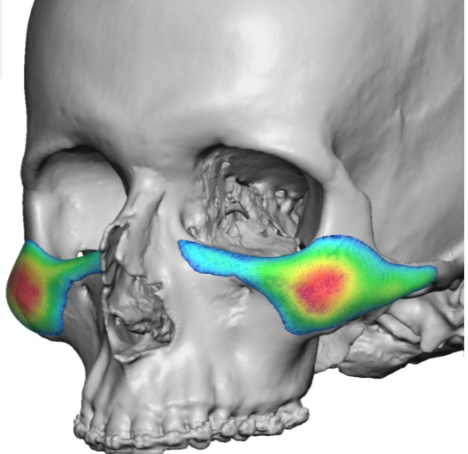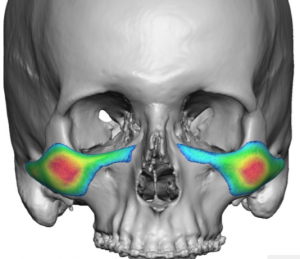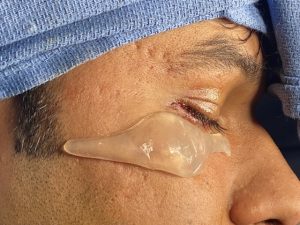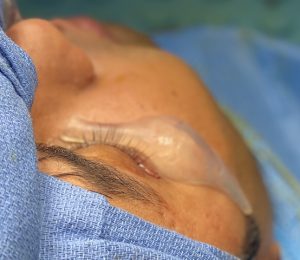Cheek augmentation in men is distinctly different than that for women. Women often seek to achieve a more anterior cheek fullness with an apple cheek appearance. To achieve that effect oval-shaped cheek implants are placed over the cheekbone with some of the implant off of the bony prominence. Conversely most men seek a cheek augmentation look that is higher and situated completely over the bone. (high cheekbone look) Lower anterior cheek fullness is to be avoided in men as that can have a feminizing effect.
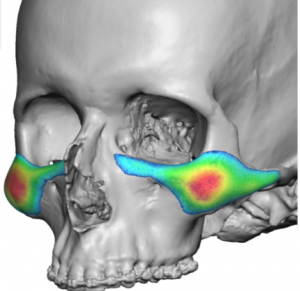
In placing the custom IOM implant the lower eyelid incision is by far the preferred approach. Getting the implant in the complete horizontal orientation is best done with a linear line of pocket dissection. A complete lower eyelid incision is not necessary as only the outer half (pupil to lateral canthus) of the eyelid incision is needed. While it can also be placed through an intraoral approach there is a higher risk of infection and implant malposition as well as potential prolonged infraorbital nerve dysesthesia and even some buccal motor nerve dysfunction. When the implant saddles the infra orbital rim, as many IOM implants do, it is virtually impossible to get it properly positioned from below.
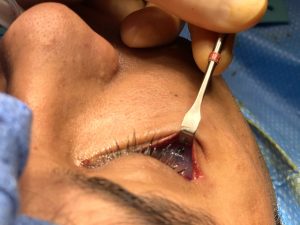
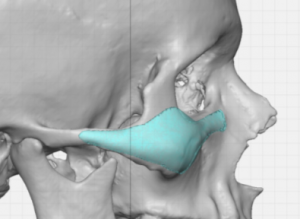
Dr. Barry Eppley
Indianapolis, Indiana

